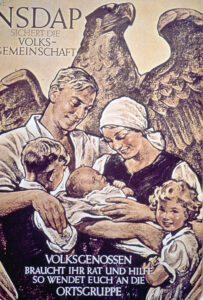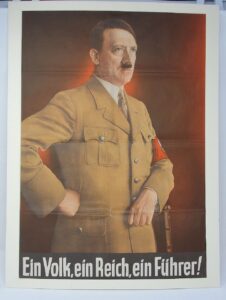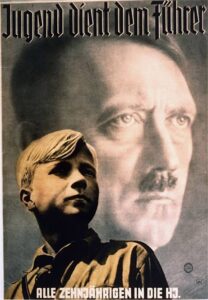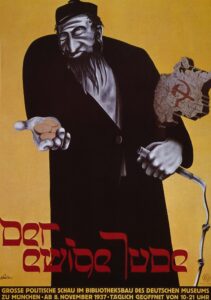Fascism and Art. In lieu of an ‘icebreaking activity’ in this session, we offered the students the above three words to respond to. This brought in a welcome variety of responses, leading to a free flowing discussion: from art as impossible to flourish in a fascist regime to art as resistance to fascism, the limitations of art in fighting fascism to censorship. This set the stage quite organically for the first segment of ourplan for the session: ‘Degenerate Art’ as per Nazi ideology.

Nazi propaganda minister Joseph Goebbels at the “Degenerate Art” exhibition in Munich in 1938. Sourced via Wikimedia Commons.
cccA screening of a section of this video clip from Facing History was followed by a moderated discussion. Some of the areas we discussed were: Why were books burnt; on what basis were the qualities of German and un-German assigned to the visual arts and music; Was this kind of totalizing bifurcation on the basis of one identity familiar to the students—had they seen it elsewhere; why did the Nazi regime take such efforts to demarcate between ‘German’ and ‘degenerate’ art 1937 onwards when they had already been in power for four years by then? The conversations that sprouted took an interesting turn when we invited students who practised any art to consider how they may react to their art being received entirely, whether accepted or rejected, through the lens of ONE aspect of their identity alone.
cc
cccFrom here, we went straight into a History for Peace teaching/learning activity called Reading Propaganda. Six groups were assigned to six breakout rooms and one propaganda poster (with caption) each from that period shared with each group. With ten minutes in hand, the task for students was to jot down first impressions on seeing the poster/pamphlet, and secondly to do a close reading of the elements in the poster and attempt to analyse what message these were supposed to convey. In the discussion that followed the students took apart each poster—analysing use of colour, mood, symbolism, codes of indoctrination and words; debating interpretations and explanations as to how Nazi ideology was ‘sold’ so to speak, to the common people.
cccAt the end of the session we shared with students their final assignment, to be presented at the eighth session. Forming groups, we asked each group to pick a contemporary sample of what they consider harmful propaganda, before collectively working on how they would most effectively counter it.
-Ranita




